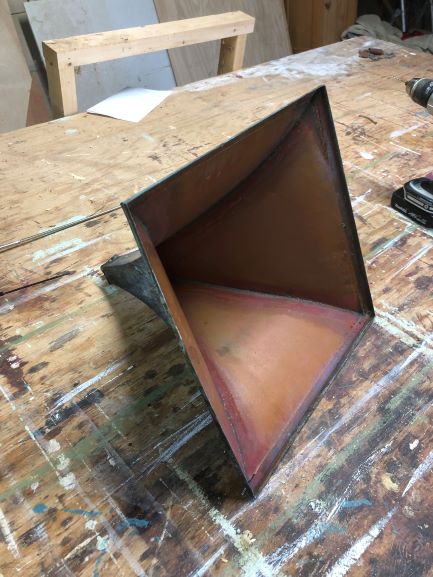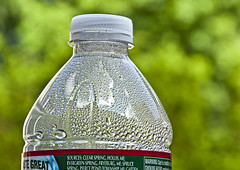
This was a beautiful birdhouse that we had up on a post for about 7 years. Eventually it got engulfed by wild growth (including poison ivy, unfortunately for me). So I endeavored to save it and move the birdhouse to a better location.
What happened? How could that wonderful metal roof not protect the birdhouse from the elements?
Turns out, this was not a failure of carpentry. It was in fact quite well built. The failure here occurred because of condensation.
Condensation, you wonder? Yes, indeed! But from where? And what exactly IS condensation?

Condensation!
Condensation occurs when the water held in the air (think: humidity) is forced out of the air due to a sudden decrease in temperature. (Scientific fact: warm air can hold more moisture than cold air)
Picture a cold can of soda on a hot day. The hot air touches the cold can, the air drops in temperature and all the moisture that the cooled air cannot hold becomes liquid condensation on the surface of the can

In this photo, do you notice that the condensation is on the inside of the bottle instead of the outside? The bottle here has been left in the sun long enough that it is hotter inside than outside. So the hot moist air inside the bottle comes into contact with the cooler plastic and condenses.
So how does this relate to the birdhouse? Well that’s where is took some (Green) Detective work to figure out that this is exactly what happened inside the metal birdhouse roof, too.
Inside the space of the upright metal roof, the air would tend to get extra hot from the sun. It wasn’t air sealed (that could have prevented this problem) so moist air was always making its way into the space under the roof. It would get hot and when the outside air cooled faster than the air inside the roof, that’s when condensation would occur on the inner surface of the metal. Probably not a lot, but over the years, all that liquid water added up to a rotted birdhouse.
Think that could happen to your home? It sure could. Gulp! But it could be avoided. As mentioned in the last paragraph, air sealing can help. This would prevent new moisture making its way into the space under the roof.
The other way is insulation. Insulation along the bottom where the metal roof meets the wood? No, that wouldn’t do much. The insulation needs to be in contact with the metal because only this way can the temperature difference between the inside and outside of the metal roof be moderated.
So there we go. The two main ways to prevent the slow decay of your home from hidden condensation. Air seal to reduce the movement of moist air and insulation in direct contact with the potentially condensing surface.
Recent Comments